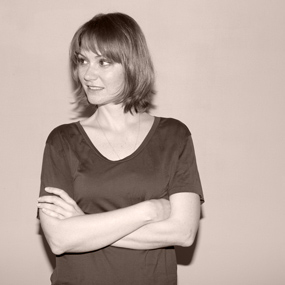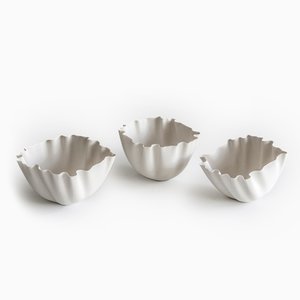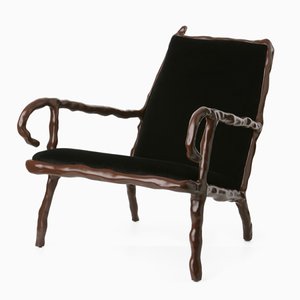Maarten Baas’s Clay series is one for the history books
21st-Century Classic
Around the year 2000, the market for collectible design began an unprecedented stratospheric rise. At the peak of its boom—between 2005 and 2009—a number of experimental young designers, often straight out of school, were ushered into the international spotlight like never before, and Maarten Baas unquestionably led this pack of emerging talent in high demand.
Baas’s debut project, Smoke—developed for his 2002 graduation from Design Academy Eindhoven and expanded over the next few years with Mooi and then Moss—set the design world literally on fire. The collection included various classic and vintage design pieces, like Rietveld’s Zig Zag Chair and Sottsass’s Carlton Cabinet, charred with a flamethrower and then preserved with an epoxy resin. Major design tastemakers from Li Edelkoort to Marcus Fairs (back when he worked for Icon Magazine and later for Dezeen) saw in Baas’s Smoke the perfect symbol for 21st-century design: a harkening back to the iconoclasm of ’70s Italy and ’90s Netherlands, but more fun, functional, and fascinating.
When the financial crisis hit, many voices in design—especially the ones most steeped in modernist ideology—amped up their criticisms of designers (young ones above all) who create limited-edition and craft-driven objects affordable only to the few, as if widespread availability, factory production, and low prices offer the only legitimate path to integrity. At the same time, design cognoscenti and laypeople alike became increasingly sensitive to the problems of unchecked, post-industrial consumerism, particularly its destructive environmental effects. With schizophrenic definitions of good design defining our current moment, few claim to know what the future of design holds. Most designers today just decide for themselves what works, as does the design-loving public.
Baas survived the hype and then the backlash, perhaps because he pioneered the independent approach—the rogue spirit—that thrives today, even before it seemed to be the only option available. In a design era that lacks coherent guidelines for success, Baas’s enigmatic work resonates with our own paradoxical, ever shifting desires; the way we wrestle with the conflicting goals of wanting more for all (for less), wanting less in general, wanting things that last, wanting to be sure the makers are happy in the making, and wanting our possessions to be both personalized and enviable.
Baas’s Clay, in particular, has become an icon of this complicated moment in design, not because the series tries to solve major, complex problems, but rather because, by unapologetically doing its own thing, it naturally, effortlessly, ticks a lot of our aspirational boxes and feels like a worthy investment. Idiosyncratic is the new timeless.
Encompassing chairs, tables, shelves, and even a fan, each made of durable, self-hardening clay hand-modeled over a simple metal structure, Clay launched in Milan in 2006 amid a frenzy of enthusiasm. “The initial idea was to make furniture with the same naivety, or clumsiness, as a child’s drawing,” recalls Baas. His goal was, in fact, to critique traditional design approaches, to envision “a contrast to the design world, in which things lose their spontaneity in either the design or the production or the commercialization. This series felt very vulnerable, yet very personal.”
Driven by Baas’s intuition, Clay reverberated through the design community, finding a level of success that even in hindsight feels very special. “To many people, it felt spot on,” Baas says. “Like a statement that was needed at that moment in time. I think it cleared the road for other designers who work in a more organic and unique way. Clay furniture was one of the first of that kind. Now you see it quite a lot.”
Since its inception, Clay has been exhibited in Miami, Basel, Paris, Shanghai, Tokyo, L.A., and on and on. It’s been accessioned into the permanent collections of Vitra Design Museum, Design Museum London, and many other institutions—and welcomed into an inestimable number of private homes. To the extent that investment and collectorship are key indicators, Baas’s Clay series, even more than his other work like Sculpt (2007), Chankley Bore (2008), and Real Time (2009), will be included in the future narratives about design today.
Even in the last five years, Clay has continued to evolve. Baas’s former studio manager, Bas Den Herder, has started his own production house, which continues to fabricate Baas’s designs on order while creating custom installations in collectors’ homes and public spaces from Chicago to Sydney. “We did a very nice hallway in a house in Chicago, almost like a fairytale kind of look,” Bass explains. “Another custom work was for a Dutch TV program [Zomergasten]. It’s a unique concept in which they interview famous people for three hours, without interruption (so the chairs needed to be comfortable). In Holland it’s a big thing to be one of the guests, and the program is an icon for Dutch television. So, to have made the chairs and table for that show was a big honor for me. Recently, I also did work for Berluti, for their window displays; I made Clay cloth hangers and other items. Very nice!”
The most recent incarnation, LED Clay Lights, was developed in collaboration with another Dutch designer, Bertjan Pot. Known for conceptual, often tongue-in-cheek projects, Pot has known Baas since 1999, and also has designs in production with Bas Den Herder (Den Herder Production House). The origin of LED Clay Lights came about quite organically, according to Pot. “A while back I told Maarten I had some ideas for his Clay that I would love to try, and one afternoon we sat together with a big chunk of material to explore its qualities,” Pot recounts. “That’s where we came up with Striped Clay.” One thing led to another, as it goes among friends, which led to LED Clay Lights, a collection of clay-covered lamps and mirrors framed with Pot’s signature, oversized bulbs, which was exhibited last April during Salone. The big idea behind the project: “When you put Baas and Pot together, you get clay with carnival lights,” Pot jokes. “And since Bas’s production house makes both… well, why not?”
Levity aside, Pot respects the integrity of Baas’s playful designs because they present a rare combination of unique visual appeal and flexibility of application. “I really like Maarten’s Clay, especially from an industrial point of view,” Pot says. “I still think the shape and language is suitable for mass production. Not everything that comes from a mold has to be as straight as things normally are.”
Even though it’s less than ten years old, Clay has become a contemporary classic because it challenges our expectation while still inducing joy; it’s innovative but still soulful, using traditional materials to create surprising forms; it uses serial production methods to create one-of-a-kinds that bear the mark of the maker; and it’s all easily customizable, but not so much more expensive than high-end, mass-produced furniture. And did I mention the joy? I hear the next plan is to make Clay furniture for use outdoors. Where the market and tastes may go next, this endlessly adaptable series is clearly here to stay.
-
Text by
-
Wava Carpenter
After studying Design History, Wava has worn many hats in support of design culture: teaching design studies, curating exhibitions, overseeing commissions, organizing talks, writing articles—all of which informs her work now as Pamono’s Editor-in-Chief.
-



